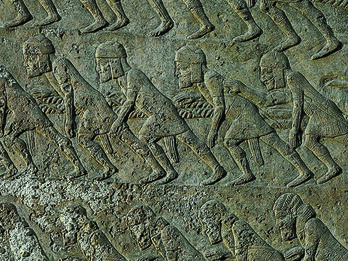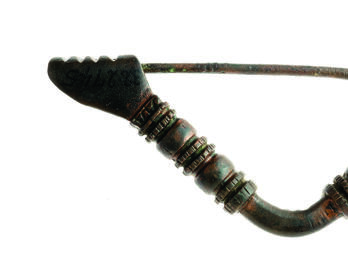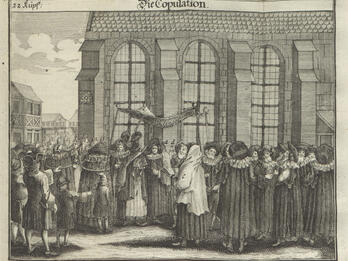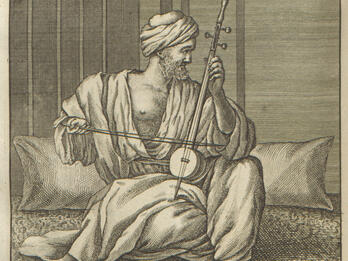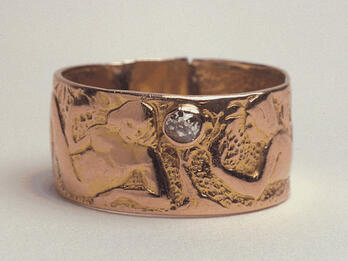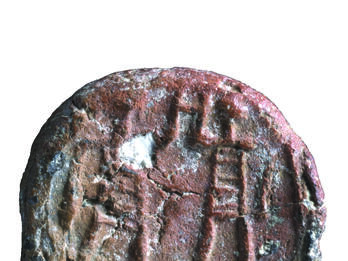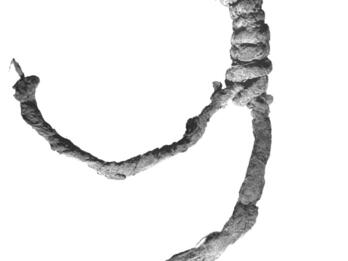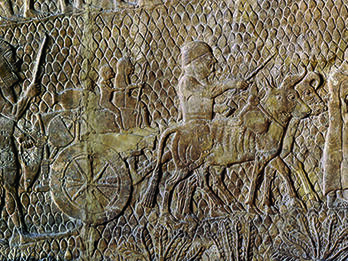Showing Results 11 - 20 of 31
Restricted
Image
This relief from Sennacherib’s palace shows workers rebuilding Nineveh, harnessed by shoulder straps to ropes by which they haul a large bull colossus toward the palace. Workers from various places…
Places:
Nineveh, Assyria (Mosul, Iraq)
Date:
Early 7th Century BCE
Subjects:
Categories:
Restricted
Image
The fibula, which replaced the toggle pin during the Iron Age, is similar to a modern safety pin. It had a main bent section with a clasp, which was often elaborately decorated, and a simple straight…
Places:
Tell Beit Mirsim, Land of Israel (Tell Beit Mirsim, Israel)
Date:
Iron Age II, Early 10th–Early 6th Century BCE
Subjects:
Categories:
Public Access
Image
This illustration depicting a Jewish wedding taking place under a huppah (wedding canopy) near a synagogue appeared in the book Jüdisches Ceremoniel (Jewish Ceremonial Customs), by Paul Christian…
Contributor:
Paul Christian Kirchner
Places:
Nuremberg, Holy Roman Empire (Nuremberg, Germany)
Date:
1724
Subjects:
Categories:
Public Access
Image
This engraving depicting a Jewish man in Cairo, Egypt is from Cornelis de Bruyn’s travelogue, Reizen van Corn. de Bruyn door de vermaardste deelen van Klein Asia, de eylanden Scio, Rhodus, Cyprus enz…
Contributor:
Cornelis de Bruyn
Places:
Paris, France
Date:
1714
Subjects:
Categories:
Restricted
Image
This Jewish woman of the Ottoman Empire wears a blue jacket over a black blouse, with red shoes and a tall hat draped in a veil. The title “Dona Ebrea in casa” translates to "Jewish woman at home."
Contributor:
Artist Unknown
Places:
Ottoman Empire (Turkey)
Date:
17th Century
Subjects:
Categories:
Restricted
Image
This repoussé gold wedding ring inlaid with a diamond represents the iconic Bezalel style: a fusion of biblical motifs, early twentieth-century European art trends such as Jugendstil, and Eastern…
Contributor:
Ze’ev Raban
Places:
Jerusalem, Ottoman Palestine (Jerusalem, Israel)
Date:
1914
Categories:
Restricted
Image
This bulla, found near the Western Wall in Jerusalem in the remains of a seventh–sixth-century BCE building, depicts two men facing each other, each raising one hand toward the other with the other…
Places:
Jerusalem, Land of Israel (Jerusalem, Israel)
Date:
Iron Age IIC, 7th–6th Century BCE
Subjects:
Categories:
Restricted
Image
This fringe from Kuntillet Ajrud, knotted from undyed linen threads, could be the fringe (tzitzit) that Israelites are commanded to wear on the corners of their garments, as indicated in Numbers 15:37…
Places:
Kuntillet Ajrud, Land of Israel (Kuntillat Jurayyah, Egypt)
Date:
Iron Age II, Late 9th–Early 8th Centuries BCE
Subjects:
Categories:
Restricted
Image
This section of the relief from the palace of Sennacherib, king of Assyria (reigned 705–681 BCE), in Nineveh depicting his conquest of Lachish in 701 BCE, shows Judahite inhabitants filing out of the…
Places:
Nineveh, Assyria (Mosul, Iraq)
Date:
ca. 701 BCE
Subjects:
Categories:
Restricted
Image
Johann Christoph Georg Bodenschatz’s Kirchliche Verfassung der heutigen Juden, sonderlich derer in Deutschland (Religious Constitution of Today’s Jews, Especially Those in Germany), published in…
Contributor:
Johann Christoph Georg Bodenschatz, Georg Paul Nusbiegel
Places:
Frankfurt am Main, Holy Roman Empire (Frankfurt am Main, Germany)
Date:
1748/9


